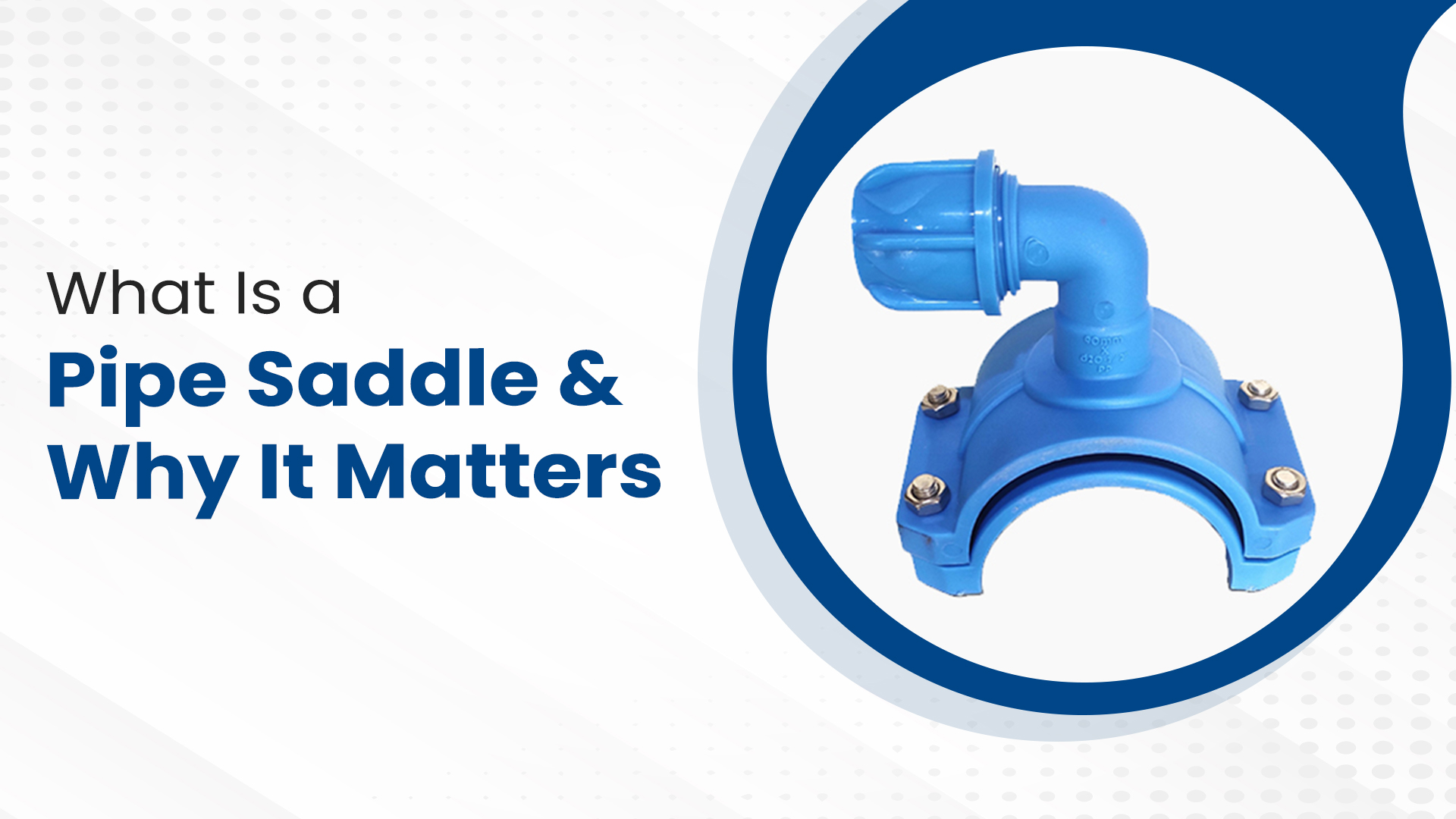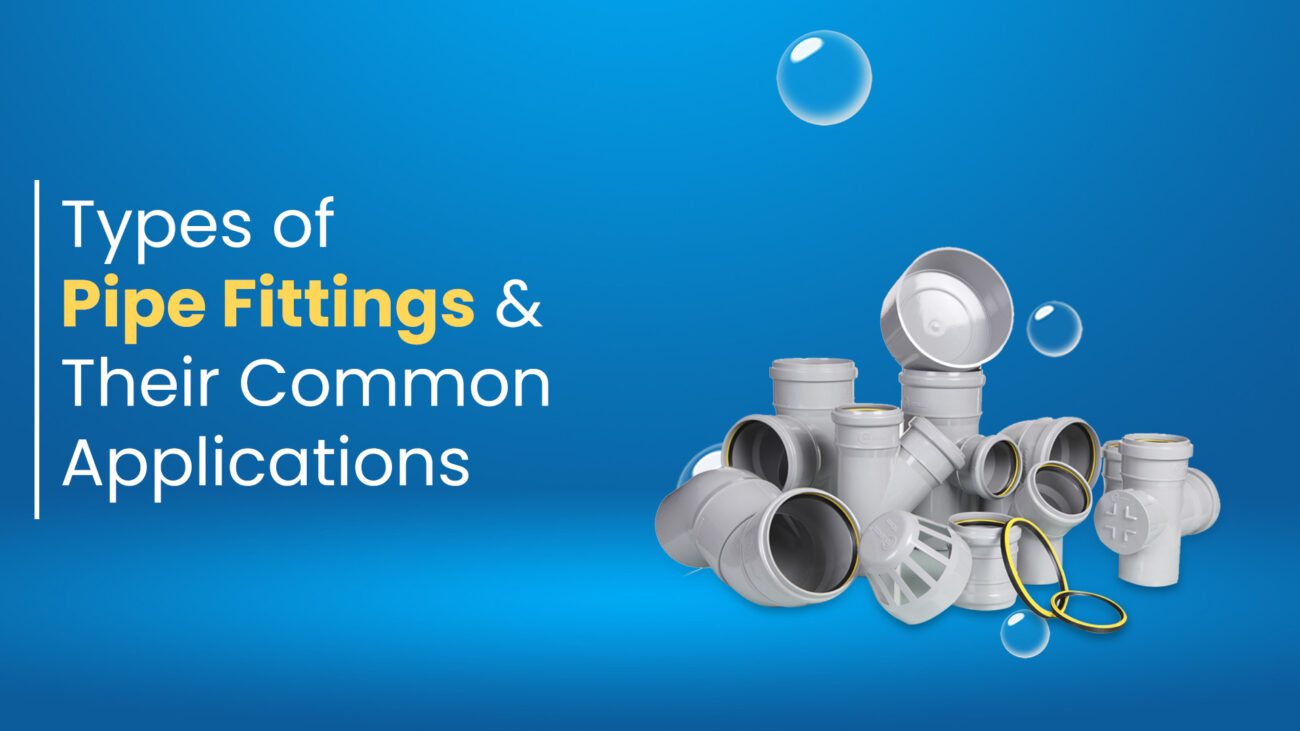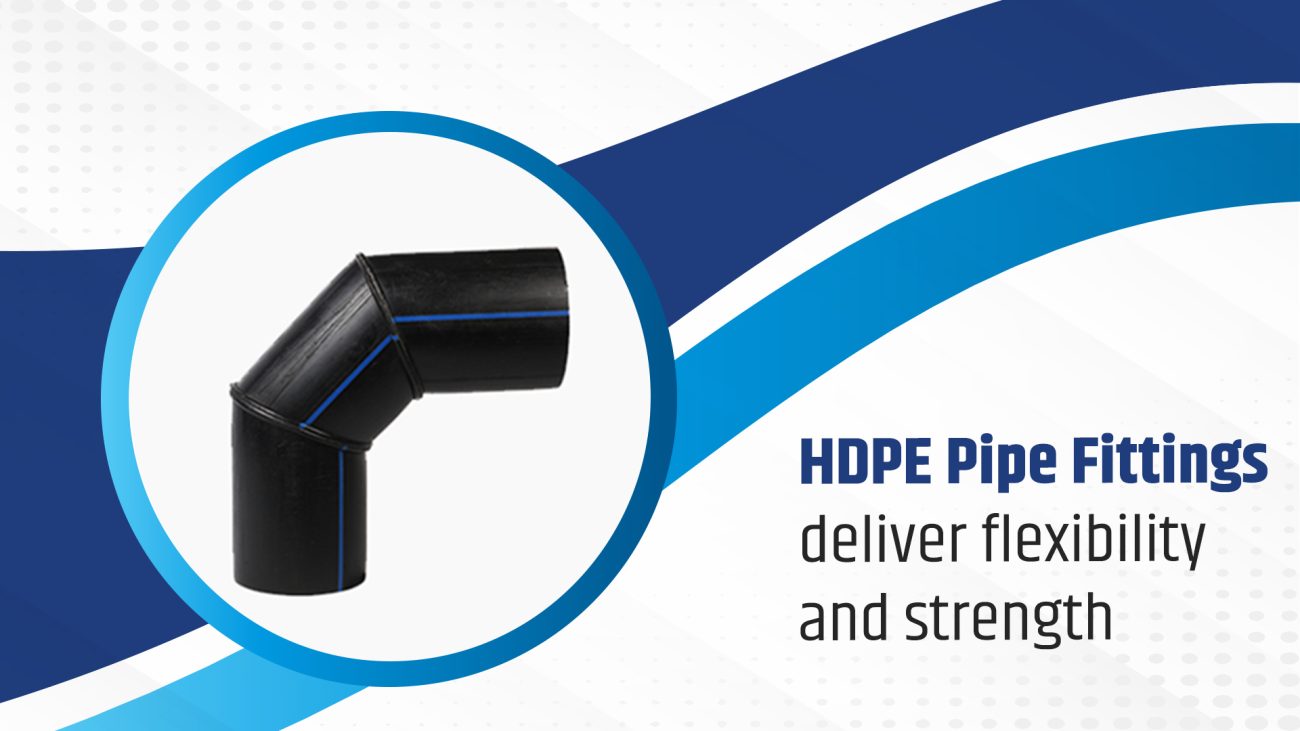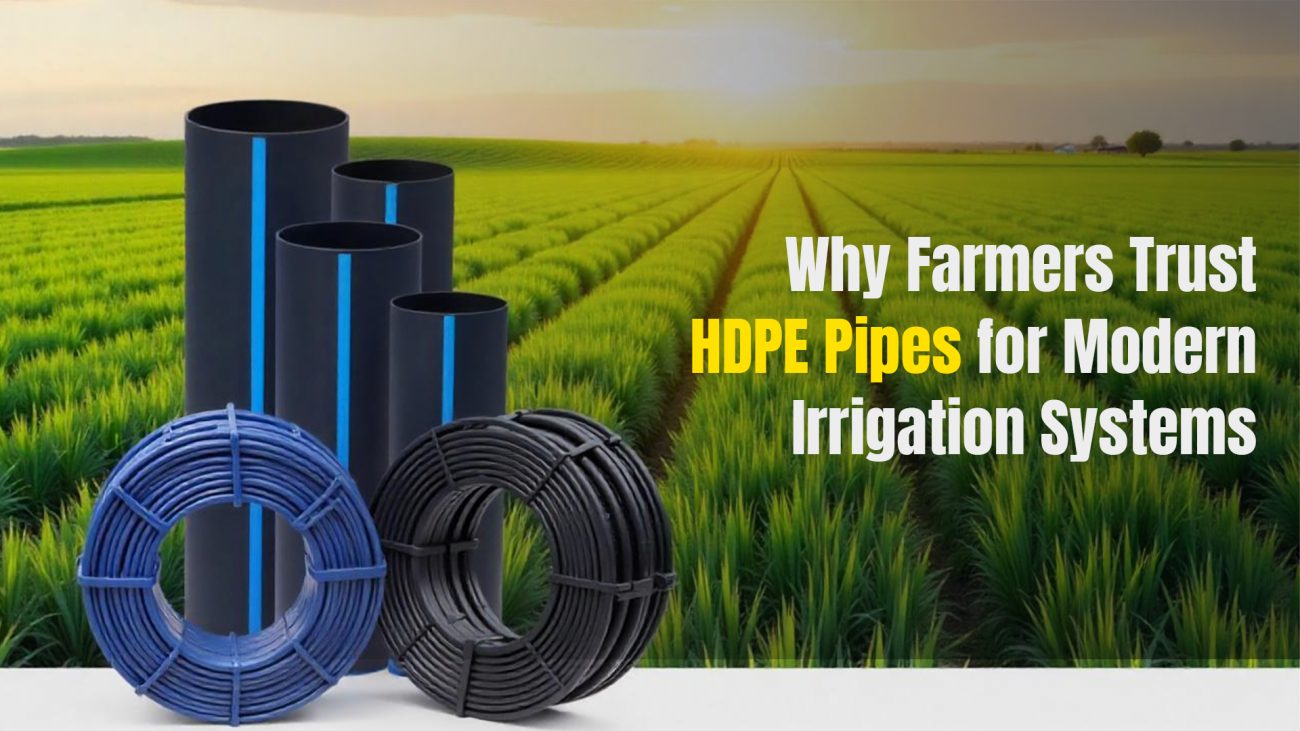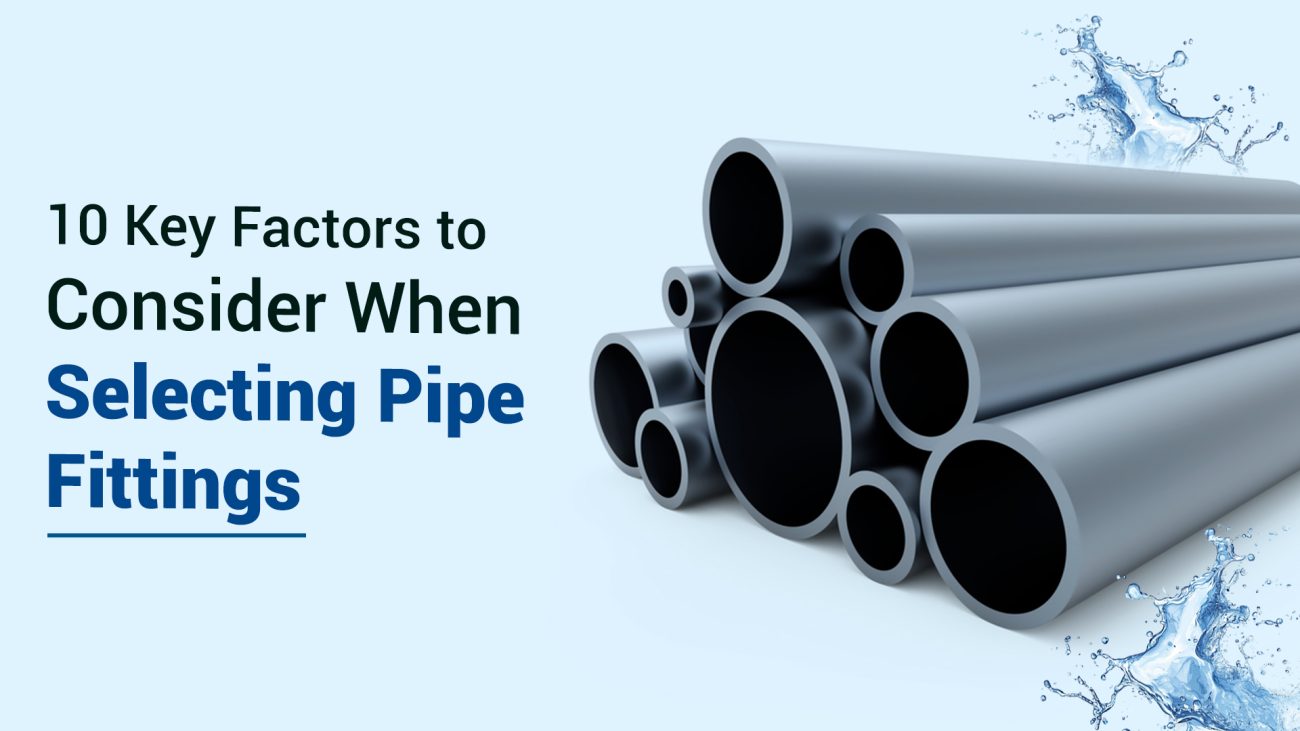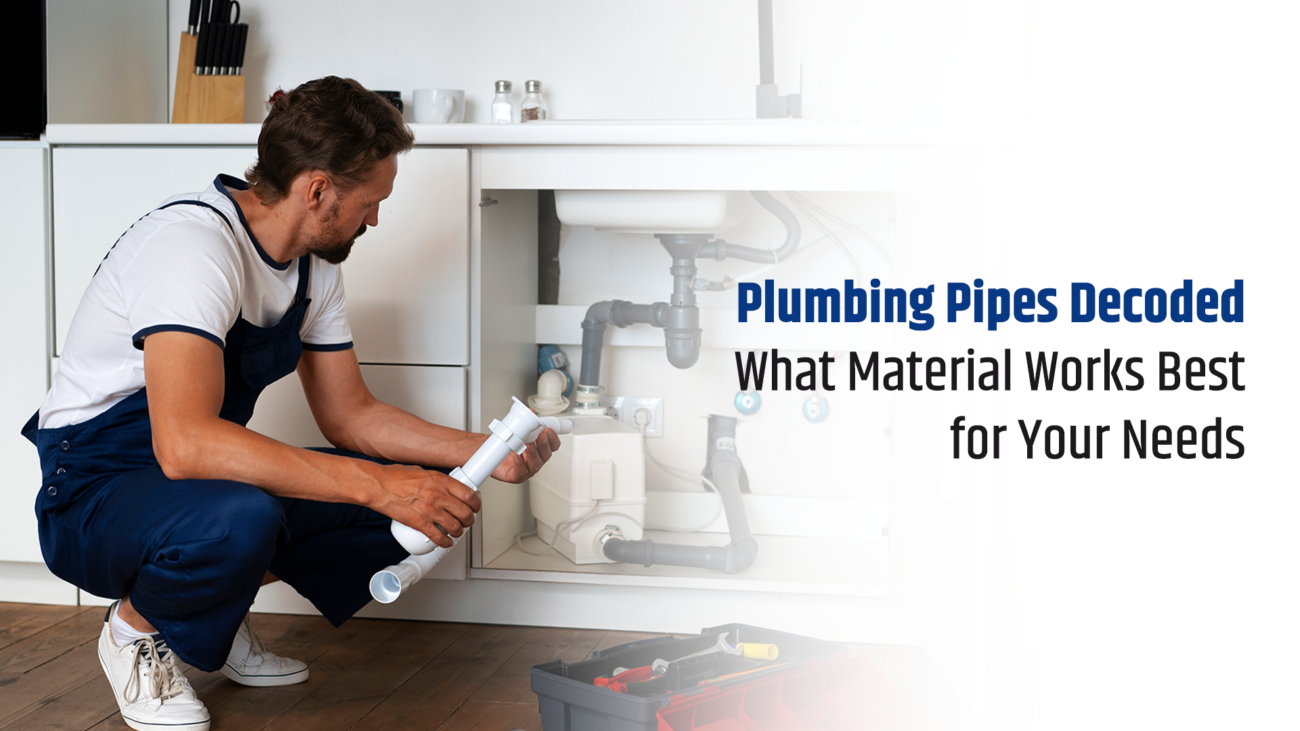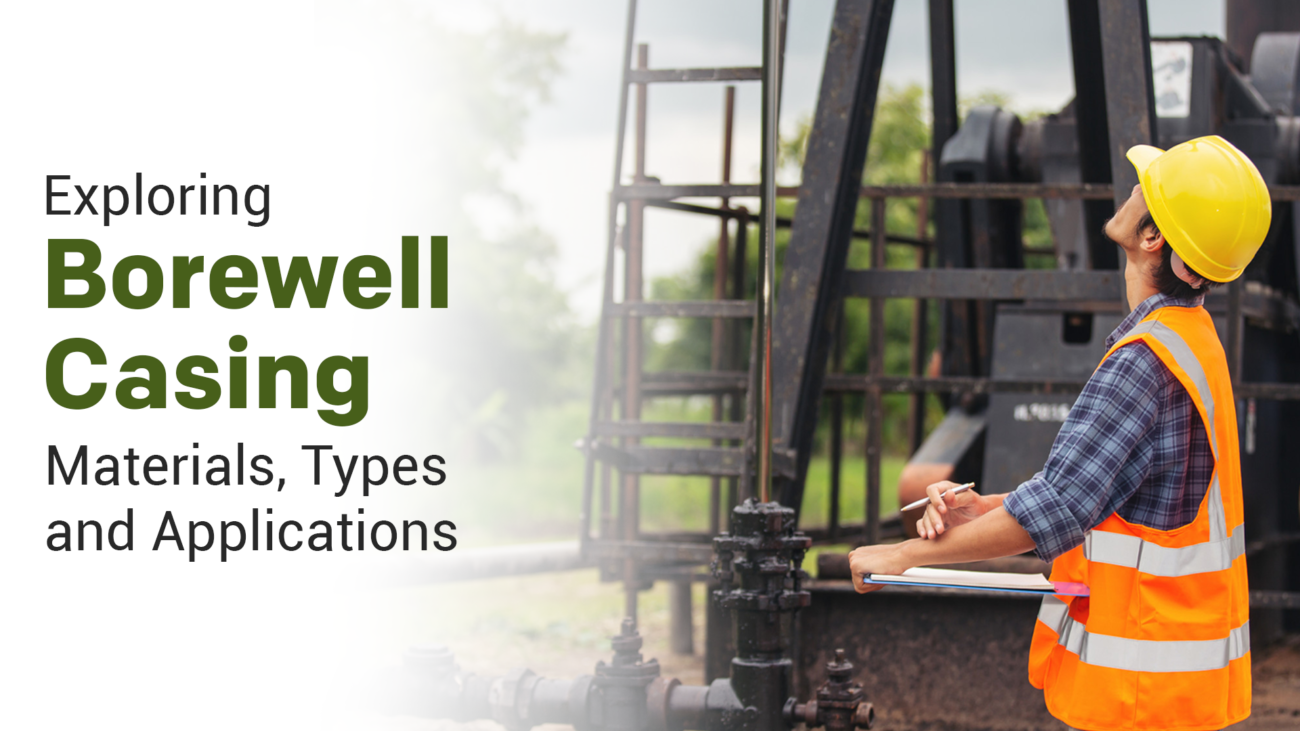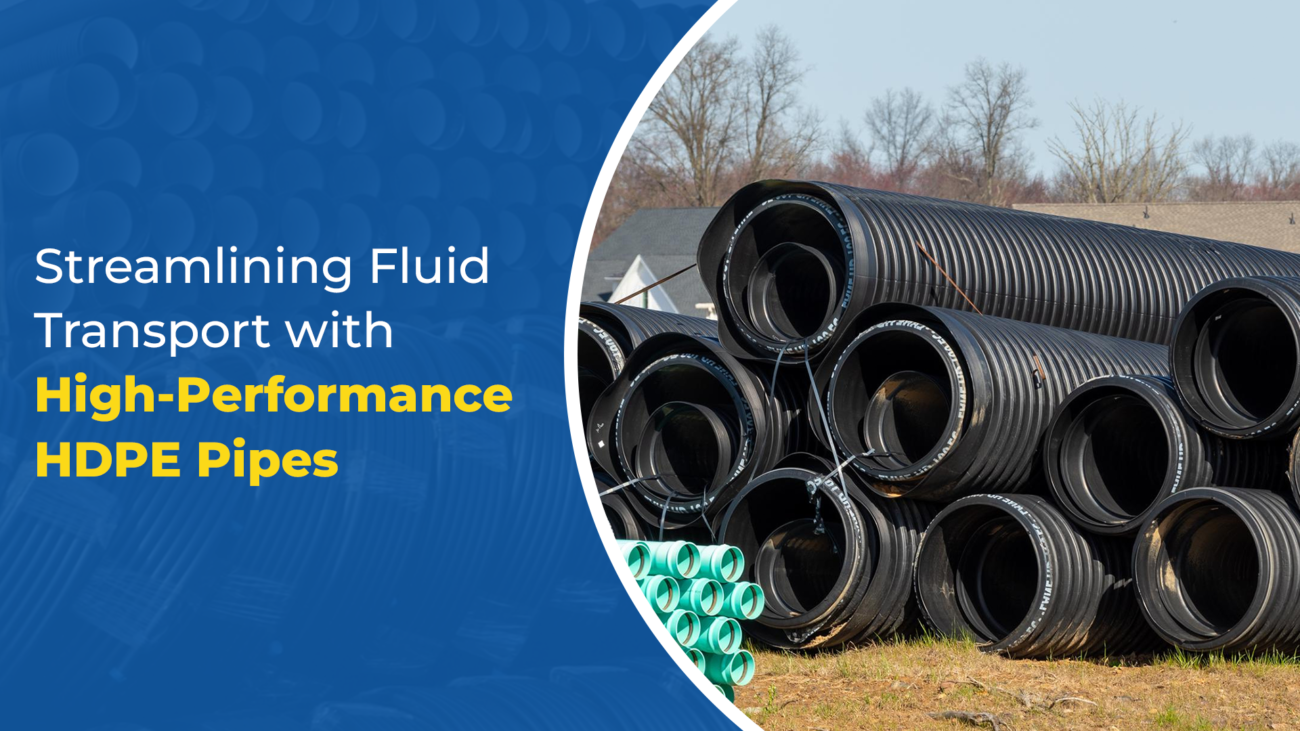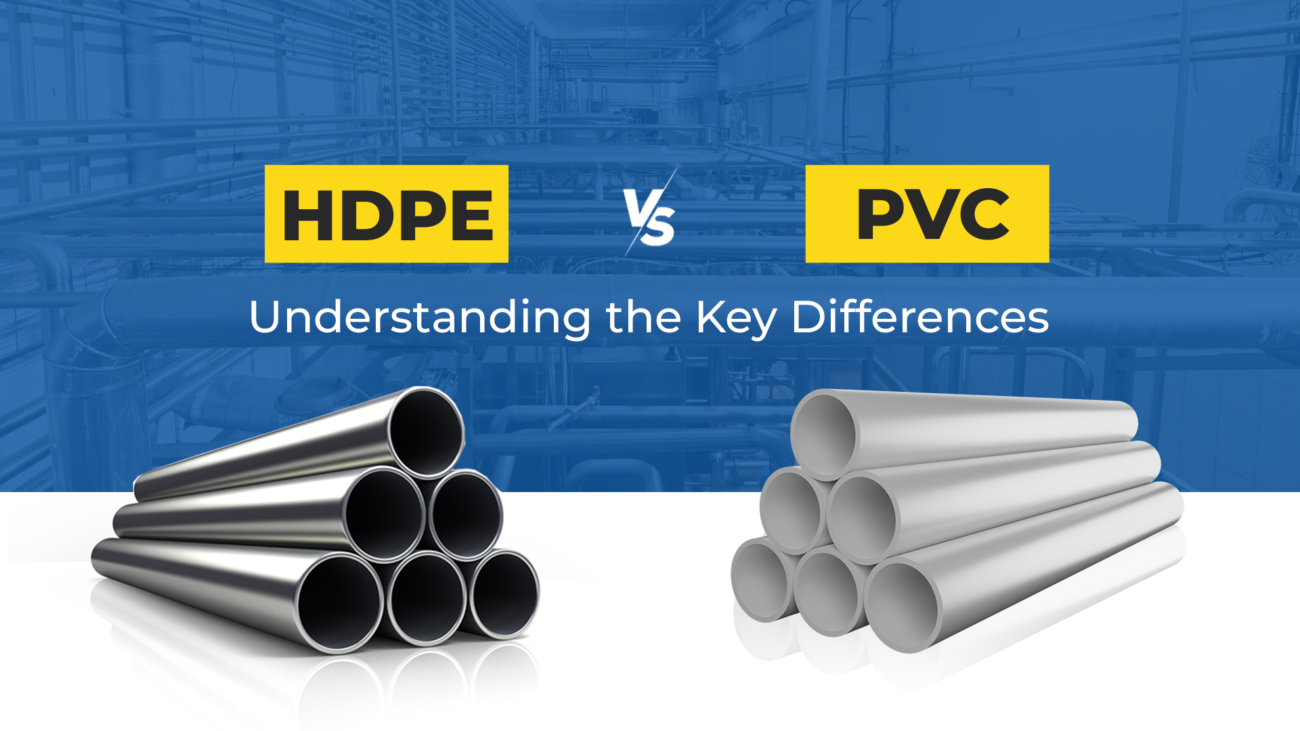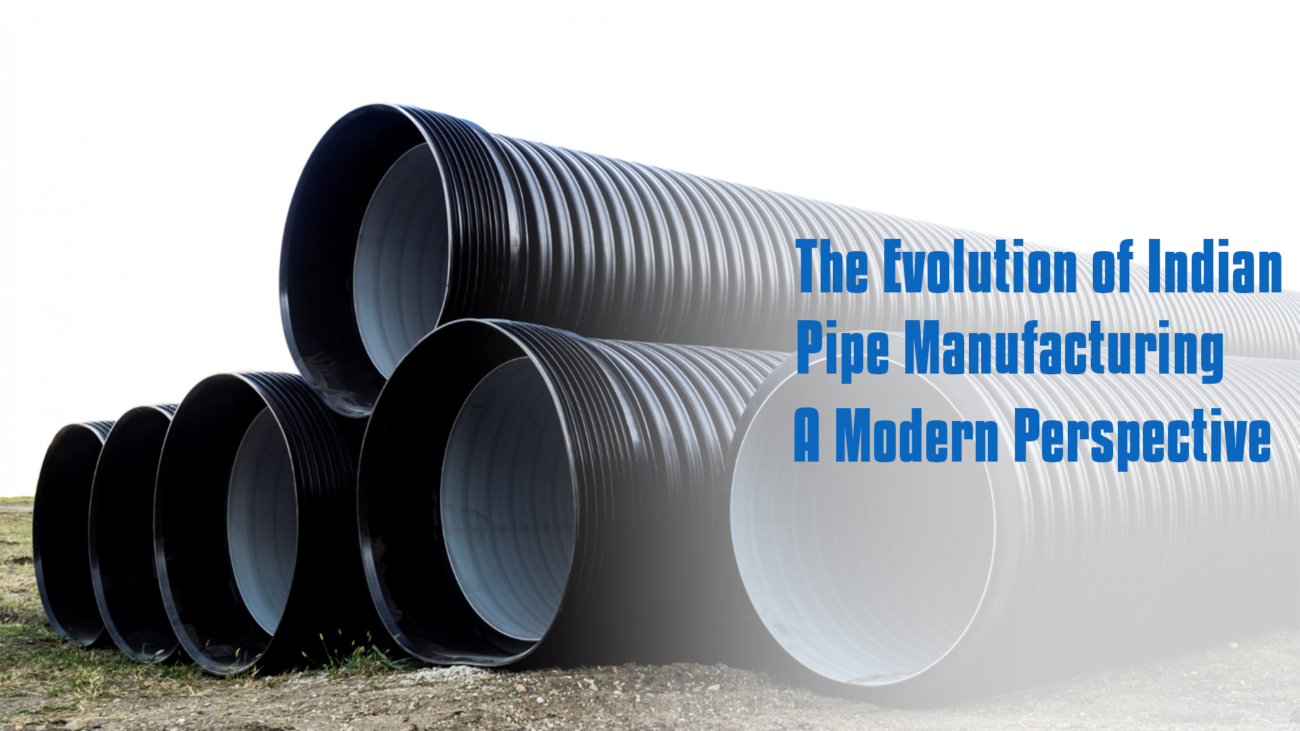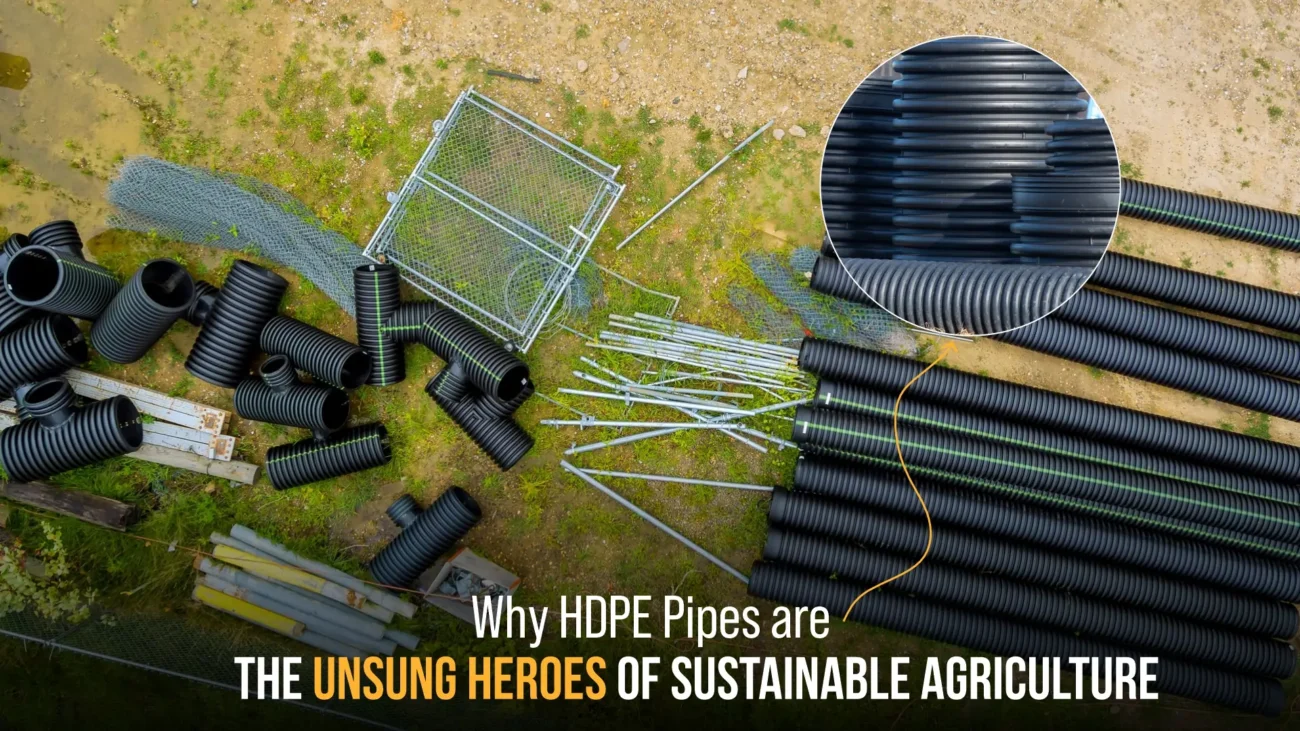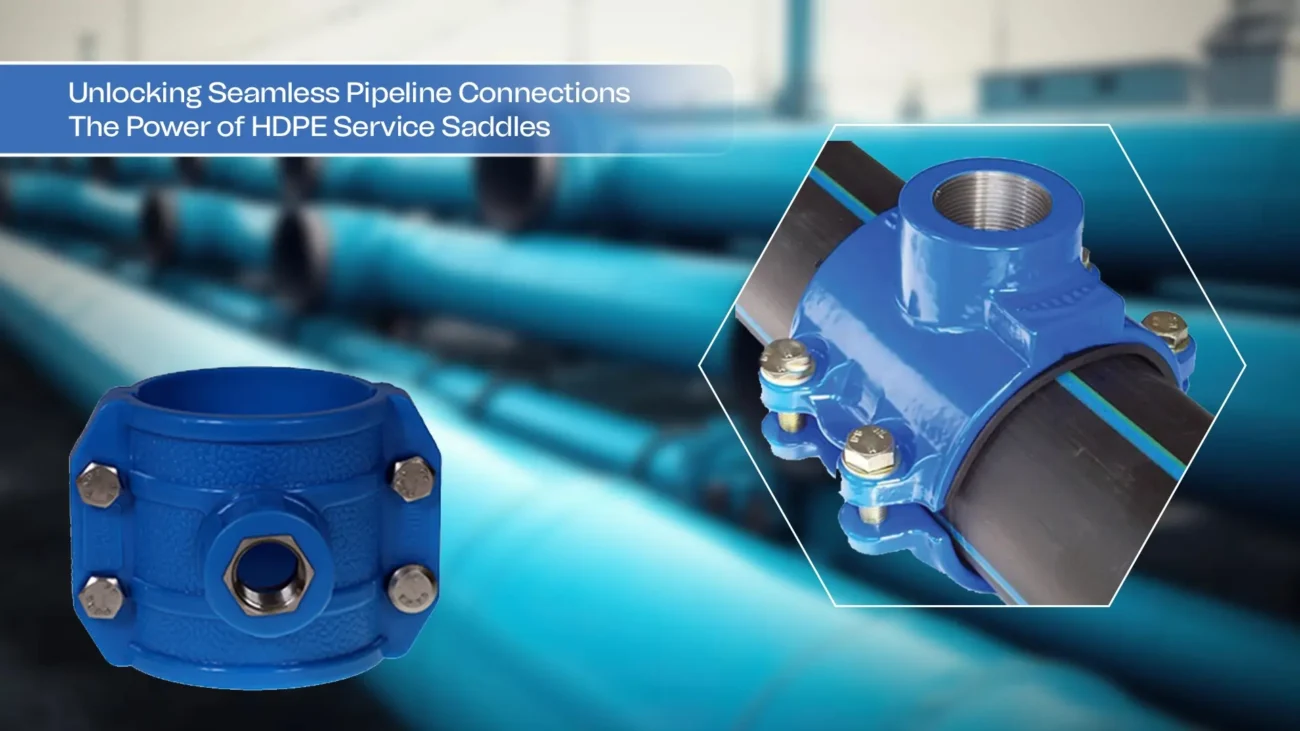Any industrial plant or building’s piping system is like its veins. They carry water, gas, chemicals, and more. But just like veins need support, pipes do too. That’s where pipe saddles come in.
A pipe saddle is a simple but crucial fitting. It holds pipes securely in place. It wraps around the pipe. It provides support and prevents movement. Without it, pipes could sag, vibrate, or even break over time.
Pipe saddles come in different materials. Like brass saddle fittings for corrosion resistance and HDPE pipe fittings for lightweight plastic pipes. Some are basic supports. While others, like saddle pipe fittings, are designed for specific connections.
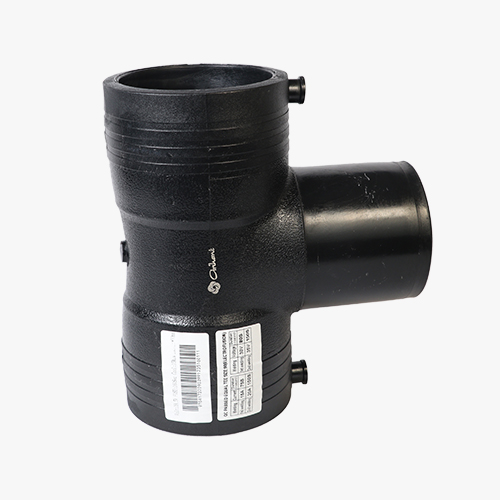
What is a Pipe Saddle?
A pipe saddle is like a seat for your pipes. It cradles them. It keeps them steady and secure. These small but mighty fittings wrap around a pipe. They give support to prevent movement, vibration, and stress. Without them, pipes could shift, sag, or even crack over time.
How Does a Pipe Saddle Work?
- It clamps or bolts around the pipe. It holds it firmly in place.
- Some saddles have cushioning to absorb vibrations. It is common in high-pressure systems.
- Brass saddle fittings resist rust and corrosion. This makes them ideal for harsh environments.
- Saddle pipe fittings are often used to branch off an existing line without cutting the main pipe.
- HDPE pipe fittings are lightweight and perfect for plastic piping systems.
Types of Pipe Saddles
Pipe saddles come in different styles, each built for specific jobs. Some just hold pipes steady. While others do more, like connecting new lines or protecting against heat. Here are the types of pipe saddles:
1.Standard Pipe Saddles
- The basic workhorse of pipe supports.
- Simply holds pipes in place to prevent sagging.
- Often made of steel or plastic.
2.Insulated Pipe Saddles
- Have a layer of protection to stop condensation or heat loss.
- Used in industrial and HVAC systems where temperature is important.
- Lined for more cushioning with foam or rubber.
3.Brass Saddle Fittings
- Made of brass saddle material for corrosion resistance.
- Common in plumbing and marine applications, since it is rust resistant.
- Durable and long-lasting.
4.Saddle Pipe Fittings
- Designed to tap into an existing pipe without cutting it.
- Often used to add branches for new water or gas lines.
- Can be clamped or welded, depending on the system.
5.HDPE Pipe Fittings
- Designed for flexible, lightweight plastic tubing.
- They are perfect for industrial use because they are chemically resistant.
- Commonly used in underground piping and irrigation.
6.U-Bolt Saddles
- Use U-bolts to clamp pipes tightly to beams or walls.
- Good for securing heavy pipes in place.
- Adjustable, so they fit different pipe sizes.
Key Functions of Pipe Saddles in Piping Systems
Pipe saddles do some heavy lifting in piping systems. Without them, pipes would wobble, shake, and wear out way too fast. Here’s why they’re so important:
1.Keeping Pipes Steady
- Pipes can sag over time, especially long ones. Saddles act like braces, holding them up.
- They prevent unnecessary movement that could loosen connections.
- A brass saddle is great for this—strong and rust-proof.
2.Stopping Annoying Vibrations
- Pumps and machinery make pipes vibrate. Over time, this can crack joints.
- Saddles absorb these shakes, keeping everything calm.
- Some even have rubber padding for extra cushioning.
3.Handling Heat Expansion
- Pipes expand when hot and shrink when cold. Saddles let them move just enough without breaking.
- Without this flexibility, pipes could snap or warp.
4.Protecting Against Wear and Tear
- Saddles shield pipes from rubbing against beams or walls.
- HDPE pipe fittings are resistant to chemical deterioration and abrasion.
5.Making Repairs and Add-Ons Easier
- A saddle pipe fitting lets you tap into an existing pipe without cutting it.
- This saves time.
- It keeps the system running during upgrades.
6.Spreading Out the Weight
- Heavy pipes can put too much pressure on one spot. Saddles distribute the load evenly.
- This prevents weak points that could lead to leaks or breaks.
Installation and Best Practices for Pipe Saddles
Putting in pipe saddles might seem straightforward, but doing it right makes all the difference. A poorly installed saddle can cause more problems than it solves. Here is how to get it done correctly:
Getting Started: What You Need to Know First
- Always check the pipe material before choosing a saddle. A brass saddle won’t work the same as HDPE pipe fittings.
- Measure pipe diameter and wall thickness. It matters for a snug fit.
- Consider the environment. Wet areas need corrosion-resistant materials. While high-heat spots need thermal protection.
Step-by-Step Installation Guide
1.Clean the Pipe Surface
- A tight seal may be affected by dirt or oil.
- Apply a degreaser to metal pipes. Make sure that there is no debris in the plastic pipes.
2.Position the Saddle Correctly
- Place it where the pipe needs the most support—usually near joints or heavy sections.
- For HDPE pipe fittings, allow some extra space for expansion on hot days.
3.Secure It Properly
- Tighten bolts properly to avoid warping the pipe.
- Avoid overtightening. It may cause coating damage or crush plastic pipes.
4.Check Alignment
Make sure the pipe sits level in the saddle. A crooked pipe can lead to leaks.
Use a spirit level if needed.
Common Mistakes to Avoid
- Skipping Insulation – In cold climates, pipes can freeze. Insulated saddles help prevent this.
- Mixing Metals – A steel saddle on a copper pipe can cause corrosion. Match materials wisely.
- Ignoring Future Access – Leave room for maintenance. A saddle buried behind a wall is useless if repairs are needed.
Conclusion: Why Pipe Saddles Matter More Than You Think
A pipe saddle is one of the most crucial components of a plumbing system. Pipes would move, sag, and eventually fail without them. Leaks, ruptures, and costly repairs could result from it.
Everything from major industrial systems to your home’s plumbing need pipe saddles. Choosing the right type (yes, material counts!) and installing it properly can save future headaches. Although they aren’t very glamorous, pipe saddles are without a doubt the greatest for preserving fluid flow.
Remember: Good support isn’t just important in life—it’s essential for your pipes too!
FAQs
1.What are pipe saddles?
Pipe saddles are support fittings. They wrap around pipes to hold them securely in place. They prevent movement, reduce vibrations, and protect pipes from damage. Common types include brass saddles for corrosion resistance and HDPE pipe fittings for plastic piping systems.
2.What is the use of a saddle in plumbing?
In plumbing, saddles:
- Support pipes to prevent sagging or misalignment.
- Absorb vibrations from water flow or nearby pumps.
- Allow for thermal expansion so pipes don’t crack under temperature changes.
- Act as connection points (like saddle pipe fittings) to branch new lines without cutting the main pipe.
3.What is a saddle in water supply?
A saddle is a clamp-like fitting used in water supply systems that: Secures pipes to beams, walls, or other structures. It is made up for long-term use from sturdy materials like HDPE or stainless steel.
4.What is a water service saddle?
A water service saddle is a specialized fitting used to:
- Tap into an existing water line (like a main supply pipe) to add a new connection.
- Usually has an integrated valve that allows water to be diverted without interrupting service.
- Commonly found in house plumbing extensions, irrigation systems, and municipal systems.



